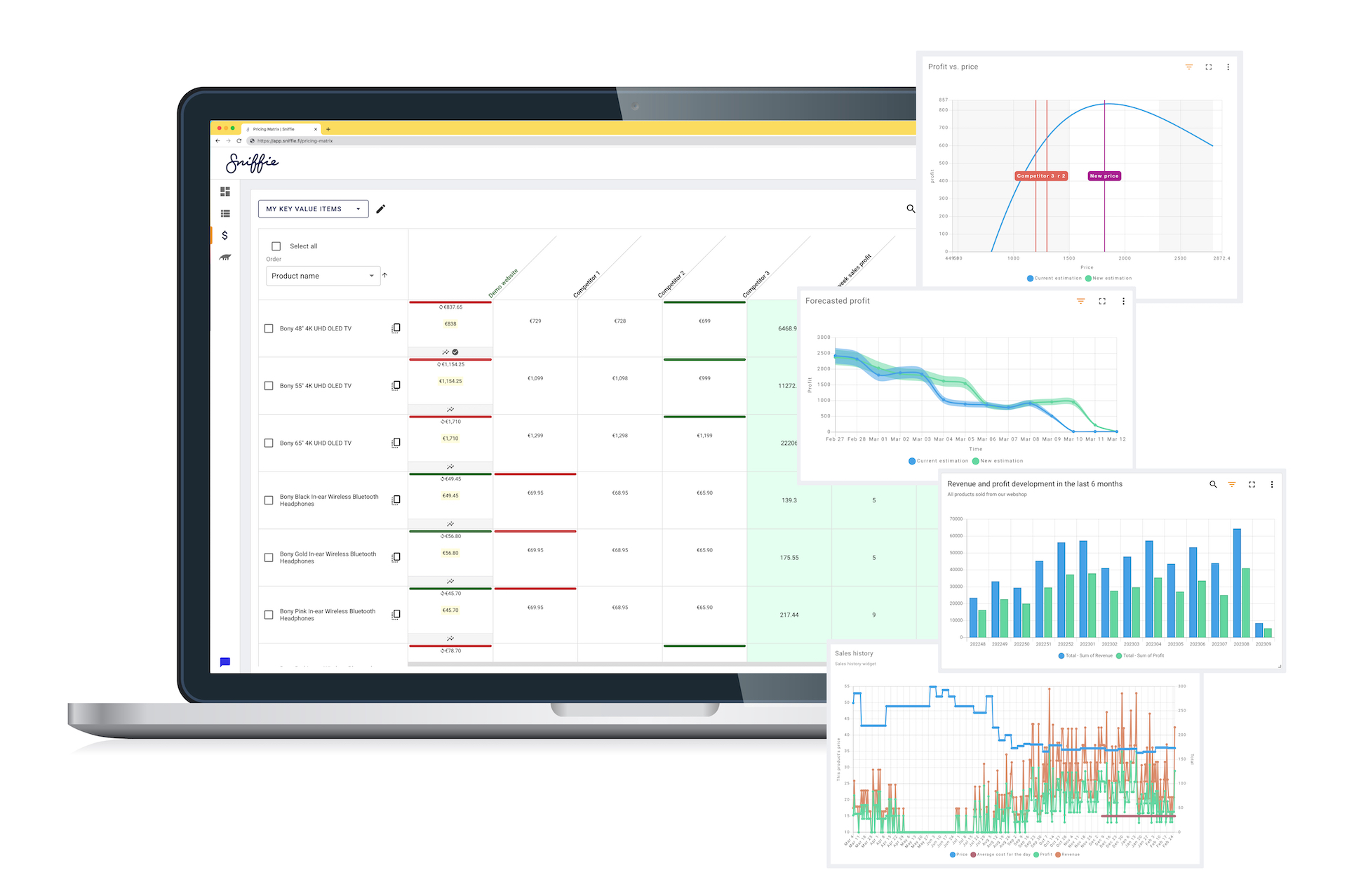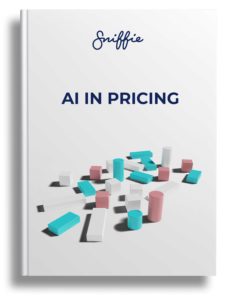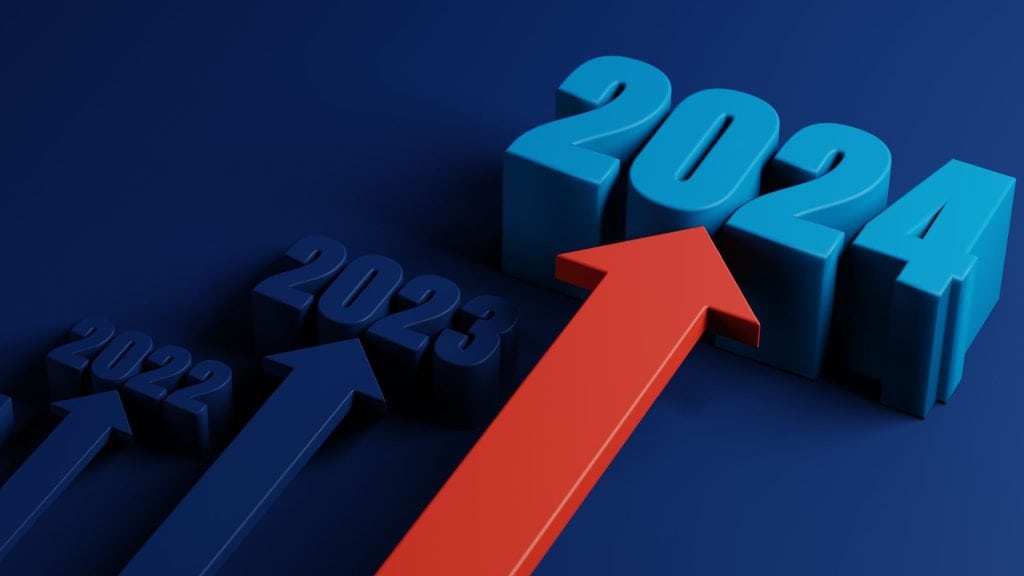As we enter 2024, e-commerce and retail businesses are at the crossroads of rapid technological advancements and evolving market dynamics. The economic landscape is still demanding, and the political scene is reasonably unprecedented. We gathered our notes and wrote with a simple approach the few main ecommerce pricing trends that will change e-commerce and retail companies in 2024.
AI will increase its usage in pricing
Artificial intelligence (AI) will be the hottest talk in pricing and how it can reshape your pricing strategies. That is an easy one. Yet, it is good to understand that AI’s increasing integration into pricing mechanisms is not just a trend; it’s becoming an indispensable tool for forecasting, markdown pricing, clearance sales, and price optimization.
Companies will be adopting different focused AI models to their pricing based on their real burning problems. For some, this will mean profit optimization; for others, calculating the most profitable launch price. There will be a significant shift to AI in e-commerce and retail. To start with the journey, here is a good book on AI in pricing.
Try us out for free
Take a spin with our free trial to give you a thorough outlook on how we could support you.

Navigating the balance between different sales channels
Many e-commerce companies will discover that their primary sales channel – their branded store – might be a different channel than their top-selling one. There is an ever-increasing expansion of companies selling on Amazon, Shopify marketplace, Instagram, and other sales channels.
Expansion into other sales channels will be a neat opportunity for companies willing to adopt that. For them, optimizing the pricing between channels will also be a constant battle so they will not cannibalize each other and that the channels sell well. One trend we predict is shifting focus back to managing your pricing landscape more thoroughly.
Integrating marketing and pricing
The digital marketing landscape, a critical driver of sales and brand visibility, has significantly increased costs. This shift necessitates a more focused and efficient approach to product marketing, especially in e-commerce. Companies will be creating a seamless connection between marketing efforts and pricing. Any friction in this pipeline will significantly impact your ROAS due to dropping conversions. In this dynamic environment, AI emerges as a key player in harmonizing marketing and pricing, ensuring that every ad dollar spent translates effectively into sales.
Seasonal awareness is increasing
Post-COVID-19, businesses are acutely aware of the importance of inventory management. Having too high stocks that are seasonal will need to be reduced. Therefore, there’s a growing need for seasonal awareness, particularly during the getting-out-of-a-season -phase. Timely clearance sales, guided by AI’s predictive analytics and pricing, will be a norm in e-commerce and retail. This strategic approach to seasonal stock management is not just about clearing inventory; it’s about maximizing profitability at every opportunity and utilizing resources well. And for the responsibility side, also avoid waste.
Pricing planning becomes a norm
In the European Union, the pricing landscape has been reshaped by the Omnibus Directive. This regulation, which mandates that merchants display the lowest price of a product over the previous 30 days during discount periods, has transformed the discounting game—no more Black Fridays where you used unreal reference prices.
The industry was forced to move from gimmicky pricing strategies to more transparent and consumer-friendly practices. Companies that fail to adapt to these compliance requirements risk legal challenges – even up to 2 million fines – and reputational damage. Hence, the directive will enforce compliance pressure, encouraging businesses to rethink their price planning and pricing strategies. This trend will go through the playing field, regardless of your size as a company.
Why are machine learning and AI the future of product pricing?
AI is a buzzword like no other. We sat down, wrote all we know about it and let you be the judge. Here is a seriously indepth 50-page insights on how to use artificial intelligence in pricing. Hope you find it useful!

Data-driven pricing to help strategic planning
As companies are faced with planning more thoroughly what they do in pricing, they need more time. In the current economic landscape hiring more people is different from what companies are willing to do. That is why we predict that many companies will adopt a more data-driven approach to their pricing.
As with AI, automation will not be just a trend; it’s a continuous strategic shift. Companies will move beyond the tactical aspects of pricing individual items to a more strategic view. By leveraging data-driven automation, where pricing considers aspects like runrate, stock levels, seasonality, profit forecasts, etc., businesses can analyze and react to accurate data and make informed decisions about pricing at any level. This strategic shift will ensure that companies can focus their time on building the competitive edge, instead of fighting in the trenches every day.
In conclusion, 2024 heralds a new era in pricing strategies where AI meets basic planning. Where transparency and digital creativeness play pivotal roles. By embracing these ecommerce pricing trends, companies can streamline operations, enhance market competitiveness, and achieve sustainable growth. Welcome to 2024, where intelligent pricing drives business success.


